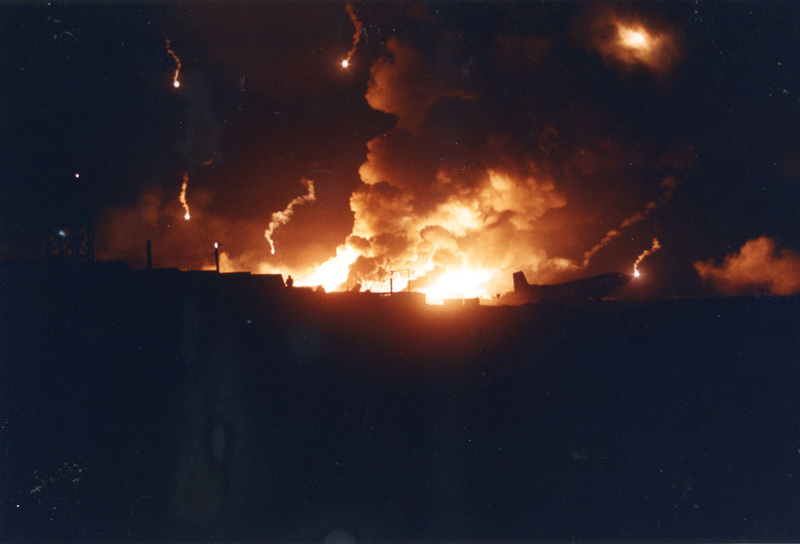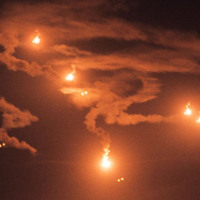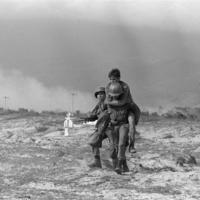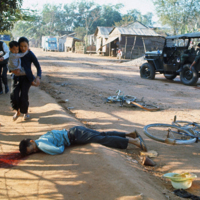Attack on Da Nang 1968
By Liam McCullough
The attack on Da Nang in 1968 comprised part of the Tet Offensive, a series of coordinated attacks by the People’s Army of Vietnam (PAVN) and the National Liberation Front (NLF) on cities and military bases during the lunar new year Tet. During the war, Dan Nang constituted the Republic of Vietnam’s (RVN) second largest city. It hosted the largest air base north of Saigon and housed the headquarters of I Corps, the military zone of the RVN’s northern provinces.
A mixture of United States Marines, Army Republic of Vietnam (ARVN), and Korean forces protected Da Nang. During the attack, the United States Army sent reinforcements. This allied force utilized helicopters, fixed wing gunships, and 120 artillery pieces. The attacking force consisted of both PAVN and Viet Cong.
In the days leading up to the attack, officials noted increased communist activity. Using infrared technology and airborne personnel detectors, the American forces knew that the communists began to gather around Hiểu Duc. By January 29th the American forces stood at full alert and prepared for an attack. Allen L. Louthian, a retired United States Marine who fought at Da Nang described American preparation. He recalled, “We were prepared to the point where we didn't lose that many men uh, at that time…”
The communist forces attacked in two groups, one that moved by land and another that moved by water. The water attack aimed to take out the bridges in order to cut off the city from the Tiensha Peninsula and then capture I Corps headquarters. The ground forces targeted other military installations.
The attack on Da Nang began on the night of January 29-30th when the Communist forces began firing rockets at the Marine helicopter strip. A group of Communist sappers then penetrated the airbase and tried to cut off communications but failed. Another sapper squad blew up the Sector Bravo Combat Operations Center. Other than attacks like these on the initial night, Communist attacks proved sporadic and uncoordinated. Da Nang remained under American control.
The offensive at Da Nang ended on February 14th. In its wake, The United States suffered less casualties than the Communists did. The United States Marines suffered 124 killed and more than 480 wounded. The United States Army had 18 killed and 59 wounded. ARVN and Korean casualties probably equaled, if not surpassed the American numbers. The United States estimated that the Communinst forces suffered around 1,200 to 1,400 deaths. Even though the Communist forces failed to obtain their objective of capturing Da Nang, the Tet Offensive caused Americans to reevaluate their intervention in Vietnam.
Further readings:
- Jack Shulimson, “The Tet Offensive at Da Nang” in U.S. Marines In Vietnam: The Defining Year, 1968 (Potomac, Maryland: Pickle Partners Publishing, November 6, 2015).
- “Tet Offensive,” History.com, April 3, 2020
- Roger Mulock, "Defending Da Nang," Historynet.com, April 7, 2017
- "Armed Forces of the Vietnam War," Pritzkermilitary.org
- Arnold Blumberg, "Sapper Attack: The Elite NorthVietnamese Units," Historynet.com, Feburary 1, 2017
- "A Vietnamese Perspective"





